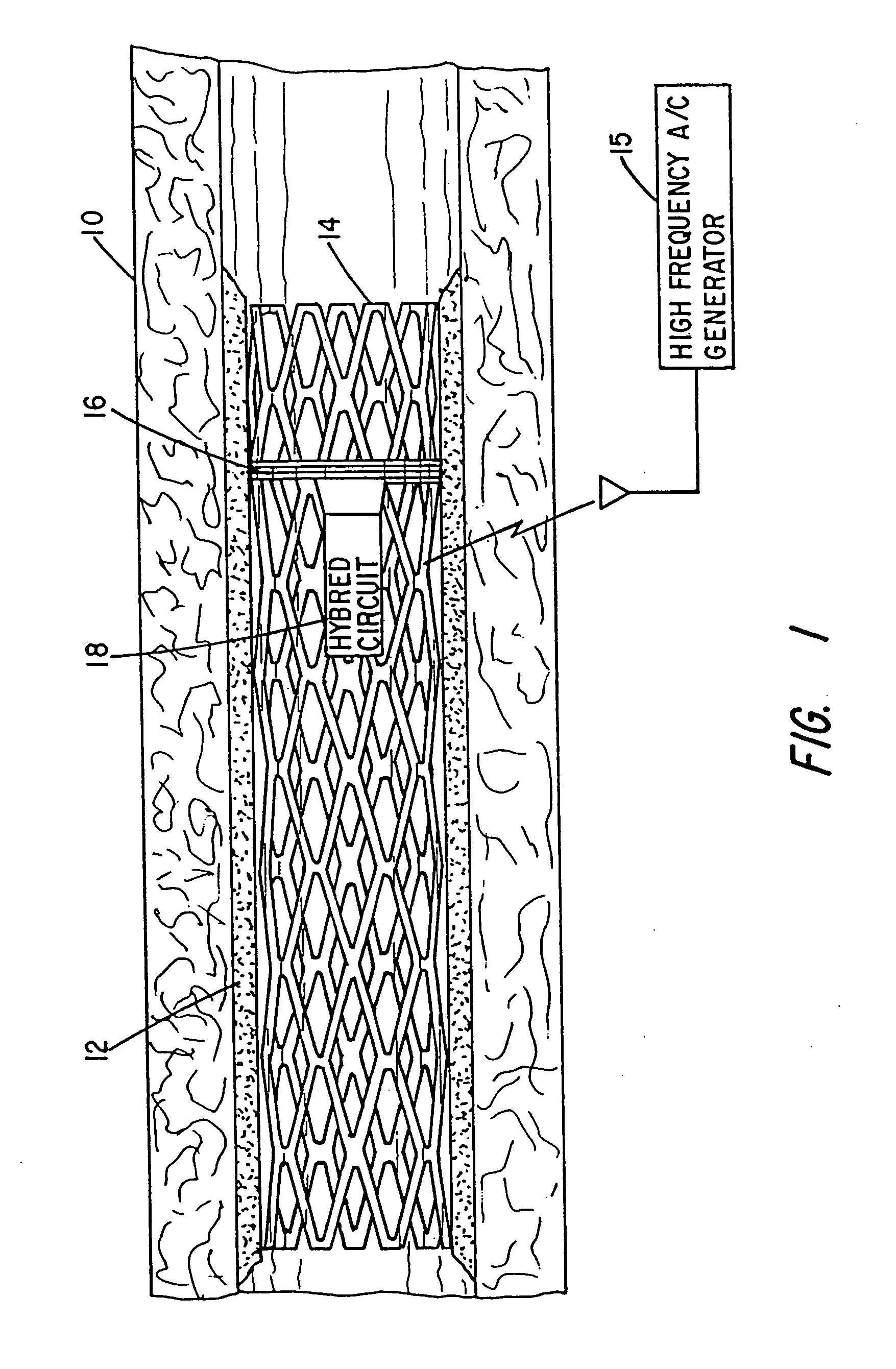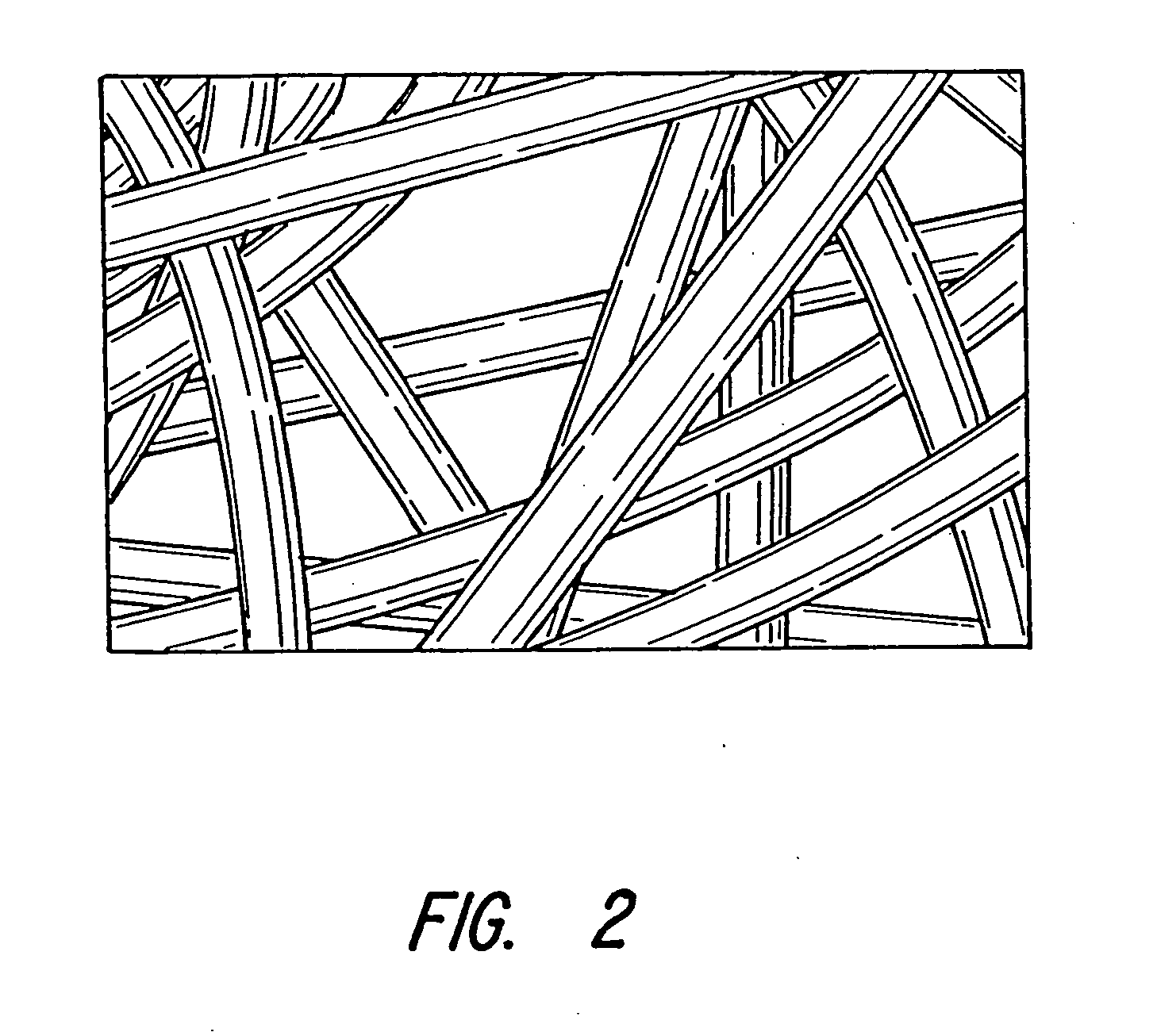Implantable device for promoting repair of a body lumen
a technology of implantable devices and lumens, which is applied in the field of implantable medical devices, can solve the problems of exacerbated injury, stenosis of atherosclerotic vessels, and damaged arterial surfaces within the vascular system are highly susceptible to thrombosis, so as to promote neointimal proliferation
- Summary
- Abstract
- Description
- Claims
- Application Information
AI Technical Summary
Benefits of technology
Problems solved by technology
Method used
Image
Examples
example 1
Temperature vs. Variable Flow Rates
[0101] The concept of flow measurement by the temperature sensitive stent is based upon the principle that a liquid (e.g. blood) flowing through a stent is a cooling medium and that the amount of cooling of a stent that has been heated above body temperature is directly proportional to the flow rate of the liquid through the stent. This is expressed by Equation I above. To validate the use of the heated stent as a measure of flow rate, experimental data was obtained through the bench testing as follows.
[0102] A GR2 type configuration stent was created using 38 AWG Nichrome resistance wire. 30 AWG Type J thermocouples were attached to the stent in three locations described as distal (furthest away from stent heating leads), mid and proximal. The stent was deployed in a simulated blood vessel made of silicone and submerged in a 37° C. distilled water bath. The water bath temperature was held constant during the testing. While a constant voltage of...
PUM
| Property | Measurement | Unit |
|---|---|---|
| temperature | aaaaa | aaaaa |
| temperature | aaaaa | aaaaa |
| diameter | aaaaa | aaaaa |
Abstract
Description
Claims
Application Information
 Login to View More
Login to View More - R&D
- Intellectual Property
- Life Sciences
- Materials
- Tech Scout
- Unparalleled Data Quality
- Higher Quality Content
- 60% Fewer Hallucinations
Browse by: Latest US Patents, China's latest patents, Technical Efficacy Thesaurus, Application Domain, Technology Topic, Popular Technical Reports.
© 2025 PatSnap. All rights reserved.Legal|Privacy policy|Modern Slavery Act Transparency Statement|Sitemap|About US| Contact US: help@patsnap.com



